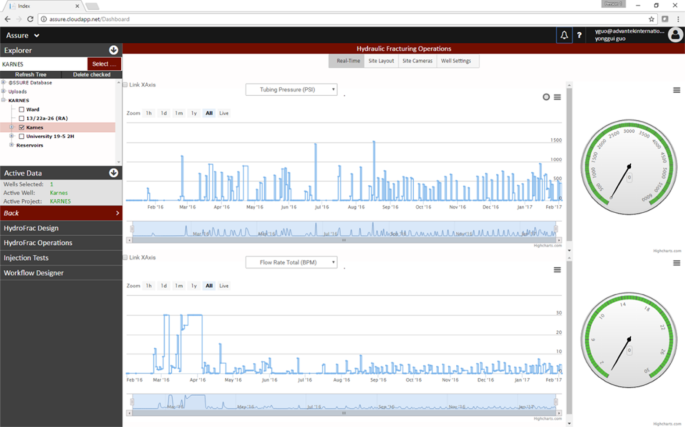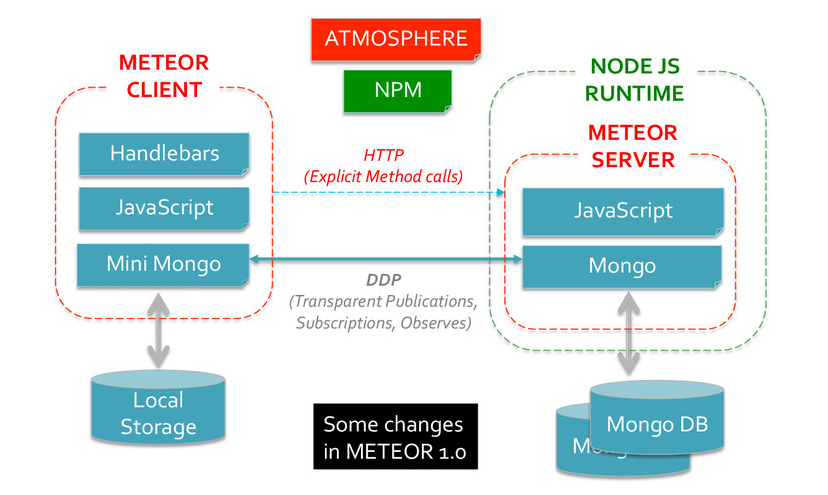In today’s fast-paced digital landscape, the demand for real-time, reactive web applications has never been higher. Users expect dynamic content that updates instantly, from live chat messages and collaborative documents to breaking news feeds and financial dashboards. While modern frameworks offer solutions, the complexity of synchronizing data between the server and multiple clients remains a significant challenge. This is where Meteor.js, a mature and powerful full-stack JavaScript platform, continues to shine. By providing an integrated ecosystem for building connected-client applications, Meteor simplifies the development of complex, data-intensive projects.
This article provides a comprehensive technical guide to leveraging Meteor.js for building modern, real-time applications. We will explore its core concepts, from its isomorphic architecture and reactive data layer to secure server-side methods. Through practical code examples, we will build a conceptual “Meteor News” application, demonstrating how to efficiently publish, subscribe to, and manipulate data. We will also cover advanced techniques, performance optimization, and best practices, offering insights applicable to both new and experienced developers. Whether you’re coming from a background in the latest React News or have experience with backend frameworks covered in Node.js News, this deep dive will equip you with the knowledge to build sophisticated, real-time applications with Meteor.
Understanding Meteor’s Core: Publications and Subscriptions
At the heart of Meteor’s real-time capabilities lies its unique data-on-the-wire protocol, the Distributed Data Protocol (DDP), and its elegant implementation through a publish-subscribe (pub/sub) pattern. Unlike traditional REST APIs where the client must repeatedly poll for updates, Meteor establishes a persistent WebSocket connection. The server “publishes” datasets, and clients “subscribe” to them. Whenever data in a published set changes on the server, the updates are automatically pushed to all subscribed clients, which then reactively re-render the UI. This creates a seamless, real-time experience with minimal boilerplate code.
Setting Up a MongoDB Collection
Meteor uses MongoDB as its default database. Collections can be defined in a shared directory (e.g., /imports/api/) so they are accessible on both the client and server. This isomorphic approach is a key feature of Meteor.
// file: /imports/api/articles/collection.js
import { Mongo } from 'meteor/mongo';
// Export a new collection for our news articles
export const ArticlesCollection = new Mongo.Collection('articles');Creating a Publication on the Server
Publications are server-only functions that control what data a client can access. They can be simple, publishing all documents in a collection, or complex, publishing only specific documents and fields based on the user’s permissions or arguments. For our news application, we’ll create a publication that sends the 10 most recent articles.
// file: /server/publications.js
import { Meteor } from 'meteor/meteor';
import { ArticlesCollection } from '/imports/api/articles/collection';
// This publication sends the latest 10 articles, sorted by creation date.
// The name 'articles.latest' is what the client will use to subscribe.
Meteor.publish('articles.latest', function publishArticles() {
return ArticlesCollection.find({}, {
sort: { createdAt: -1 },
limit: 10,
});
});This simple block of code is incredibly powerful. Meteor handles the entire process of tracking changes to the result of this find() query. If a new article is inserted or an existing one is updated, the changes are automatically sent to every client subscribed to 'articles.latest'. This contrasts sharply with manual state management often seen in stacks built with Express.js or Fastify, where you would need to implement WebSockets and state synchronization yourself. The latest Vite News highlights how Meteor has integrated modern build tools, making this classic reactivity pattern faster than ever.
Implementation: Integrating Meteor with a React Frontend
While Meteor was initially coupled with its own Blaze frontend library, it has since evolved to offer first-class support for modern view layers like React, Vue, and Svelte. This allows developers to combine Meteor’s powerful real-time backend with the component-based architecture and rich ecosystem of their favorite frontend framework. The latest Angular News and Vue.js News often focus on component architecture, a paradigm that fits perfectly with Meteor’s data handling.

Subscribing to Data in a React Component
To use Meteor’s reactive data in a React component, we use the useTracker hook from the meteor/react-meteor-data package. This hook creates a reactive computation that re-runs whenever its dependencies change. Inside the hook, we subscribe to our publication and fetch the data from the local client-side database, called MiniMongo.
// file: /imports/ui/ArticleList.jsx
import React from 'react';
import { useTracker } from 'meteor/react-meteor-data';
import { ArticlesCollection } from '/imports/api/articles/collection';
export const ArticleList = () => {
// useTracker sets up a reactive computation.
const { articles, isLoading } = useTracker(() => {
// Subscribe to the publication. The handle is used to check readiness.
const handle = Meteor.subscribe('articles.latest');
// isLoading is true until the subscription is ready.
const isLoading = !handle.ready();
// Fetch the articles from the local MiniMongo collection.
// This find() query will automatically re-run when the data changes.
const articles = ArticlesCollection.find({}, {
sort: { createdAt: -1 }
}).fetch();
return { articles, isLoading };
});
if (isLoading) {
return <div>Loading news...</div>;
}
return (
<div className="article-feed">
<h2>Latest News</h2>
<ul>
{articles.map(article => (
<li key={article._id}>
<h3>{article.title}</h3>
<p>{article.summary}</p>
</li>
))}
</ul>
</div>
);
};This component is now fully reactive. When a new article is added to the database on the server, the 'articles.latest' publication updates, DDP sends the new data to the client, MiniMongo is updated, and the useTracker hook automatically re-runs. This triggers a re-render of the ArticleList component with the new article, all without any manual API calls or state management logic. This seamless integration is a significant advantage over building a similar feature with separate frontend and backend frameworks like Next.js News with an AdonisJS News backend, where you would be responsible for the entire data-syncing layer.
Advanced Techniques: Secure Mutations with Meteor Methods
While publications handle real-time data flow from server to client, Meteor Methods provide a secure way for clients to call functions on the server to perform actions or mutate data. Directly allowing clients to write to the database is a major security risk. Methods act as trusted endpoints, allowing you to validate input, check user permissions, and execute complex business logic before modifying the database.
Defining and Calling a Meteor Method
Let’s create a method for users to submit a new article. This method will be defined on the server and will perform validation checks before inserting the data. We can use a library like zod or Meteor’s built-in check utility for schema validation.
// file: /imports/api/articles/methods.js
import { Meteor } from 'meteor/meteor';
import { check, Match } from 'meteor/check';
import { ArticlesCollection } from './collection';
Meteor.methods({
'articles.insert'(title, summary, url) {
// Validate the input types.
check(title, String);
check(summary, String);
check(url, String);
// Ensure the user is logged in before allowing them to post.
if (!this.userId) {
throw new Meteor.Error('not-authorized', 'You must be logged in to post an article.');
}
// Perform business logic validation (e.g., check for non-empty strings).
if (title.trim().length === 0 || url.trim().length === 0) {
throw new Meteor.Error('invalid-input', 'Title and URL cannot be empty.');
}
// Insert the new article into the collection.
ArticlesCollection.insert({
title,
summary,
url,
createdAt: new Date(),
owner: this.userId,
});
},
});On the client, we can now call this method from a form component. Meteor handles the RPC call transparently over DDP.
// In a React form component
import React, { useState } from 'react';
import { Meteor } from 'meteor/meteor';
export const ArticleSubmitForm = () => {
const [title, setTitle] = useState('');
const [summary, setSummary] = useState('');
const [url, setUrl] = useState('');
const [error, setError] = useState(null);
const handleSubmit = (e) => {
e.preventDefault();
setError(null);
Meteor.call('articles.insert', title, summary, url, (err) => {
if (err) {
setError(err.reason);
} else {
// Clear form on success
setTitle('');
setSummary('');
setUrl('');
}
});
};
// ... JSX for the form ...
};This approach provides a clear and secure boundary between client and server logic. The client is only responsible for gathering input and invoking the method. All critical validation and database operations happen on the server, protected from tampering. This is a best practice seen across many backend frameworks discussed in NestJS News and RedwoodJS News, but Meteor makes the client-server communication exceptionally simple.
Best Practices and Performance Optimization
Building a robust Meteor application involves more than just understanding the basics. Following best practices for performance and security is crucial for scaling your application.

1. Limit Fields in Publications
By default, a find() query returns all fields in a document. This can lead to over-fetching, where you send unnecessary data to the client. Always use the fields option in your publications to specify exactly which fields are needed for the UI. This reduces bandwidth usage and minimizes the amount of data stored in MiniMongo.
return ArticlesCollection.find({}, { fields: { title: 1, summary: 1, createdAt: 1 } });
2. Use Indexes in MongoDB
Just like with any database-driven application, proper indexing is critical for performance. For our 'articles.latest' publication, which sorts by createdAt, we should ensure an index exists on that field in our MongoDB collection.
// On the server, ensure an index exists
ArticlesCollection.createIndex({ createdAt: -1 });

3. Code Splitting and Dynamic Imports
Modern JavaScript applications can become large. Use dynamic import() statements to code-split your application. This means that code for specific routes or components is only loaded when it’s actually needed, leading to a faster initial page load. The latest Webpack News and Turbopack News are filled with discussions on advanced bundling techniques, and Meteor’s build tool fully supports these modern features.
4. Leverage Modern Testing Tools
Ensure your application is reliable by writing comprehensive tests. The JavaScript ecosystem offers powerful tools for this. Use Vitest or Jest for unit and integration testing your methods and components, as frequently discussed in Jest News and Vitest News. For end-to-end testing that simulates real user behavior, frameworks like Cypress or Playwright are invaluable. The latest Cypress News and Playwright News showcase how these tools can automate browser interactions to validate your application’s reactivity and functionality from a user’s perspective.
Conclusion: The Enduring Power of Meteor.js
Meteor.js offers a uniquely integrated and efficient platform for building real-time web applications. Its core features—the reactive pub/sub data layer, isomorphic code, and secure server-side Methods—drastically reduce the boilerplate and complexity typically associated with synchronizing state between client and server. By embracing modern frontend frameworks like React and integrating cutting-edge build tools like Vite, Meteor remains a highly relevant and powerful choice in today’s crowded JavaScript ecosystem.
Throughout this article, we’ve walked through building a conceptual “Meteor News” application, demonstrating how to set up collections, publish and subscribe to data, create a reactive UI with React, and secure data mutations with Methods. By applying the best practices discussed, such as optimizing publications and implementing a solid testing strategy, you can build scalable, performant, and maintainable applications. For your next project that demands a seamless, real-time user experience, consider diving into Meteor. You may find it to be the fastest path from idea to a fully functional, connected-client application.

